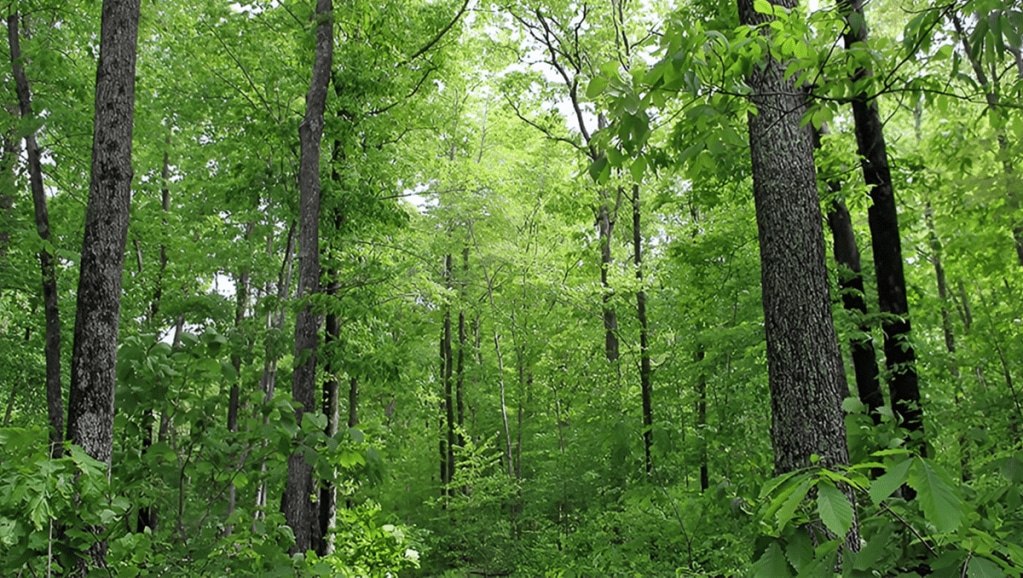– By Sayanta Ghosh and Dr Jitendra Vir Sharma
The India State of Forest Report 2023 (ISFR) offers a mixed bag of insights into the state of the nation’s forests. On the surface, the report brings encouraging news: India has added 156.41 sq. km.of forest cover within Recorded Forest Areas (RFA) and achieved a total increase of 1,445.81 sq. km.in forest and tree cover. This progress reflects India’s commitment to combating climate change, enhancing green cover, and achieving its Nationally Determined Contributions (NDC) targets under the Paris Agreement. However, the report also highlights significant challenges, including widespread degradation, a decline in natural forests, and a worrying shift in forest quality.
The Positive Picture: Progress in Numbers
India’s total forest and tree cover now stands at 25.17% of the country’s geographical area, with forest cover accounting for 7,15,342.61 sq. km (21.76%) and tree cover outside forested areas contributing 1,12,014.34 sq. km (3.41%). States like Chhattisgarh (+683.62 sq. km), Uttar Pradesh (+559.19 sq. km), Odisha (+558.57 sq. km), and Rajasthan (+394.46 sq. km) have shown significant increases in forest and tree cover, largely driven by afforestation drives, agroforestry promotion, and compensatory plantation efforts. Agroforestry and plantations have also been instrumental in boosting tree cover outside Recorded Forest Areas (RFAs), particularly in states like Gujarat (+241.29 sq. km) and Bihar (+106.85 sq. km). Advances in high-resolution satellite imagery and mapping techniques have further ensured accurate assessments and effective policy interventions. These achievements highlight a commendable balance between development and environmental conservation, underscoring India’s leadership in climate action.
Hidden Concerns: The Quality of Forests
While the overall figures indicate progress, deeper analysis reveals signs of forest degradation, including a troubling shift from Moderately Dense Forests (MDF) to Open Forests (OF). MDFs, with canopy density between 40-70%, are critical for biodiversity and ecosystem services, and their decline suggests thinning and fragmentation that compromise ecological stability. States like Madhya Pradesh (-612.41 km²), Karnataka (-459.36 km²), and Nagaland (-125.22 km²) have reported significant reductions in forest cover, while the Northeast, known for its rich biodiversity, saw a decrease of 327.30 square kilometers due to shifting cultivation, encroachments, and developmental pressures. Mangroves, essential for coastal defense and carbon sequestration, have also suffered, with a decline of 7.43 square kilometers nationally and Gujarat recording the highest loss, further emphasizing the need for targeted conservation efforts.
Balancing Positivity with Challenges
The ISFR 2023 captures India’s progress in expanding green cover but also underscores the need to address several underlying challenges. While afforestation and agroforestry have contributed significantly to the quantitative increase in forest cover, qualitative issues, such as the degradation of natural forests within RFAs, cannot be ignored. Development pressures continue to take a toll on India’s forests. Infrastructure projects, mining activities, and urbanization are encroaching on natural forest areas, particularly in biodiversity-rich regions. Protected areas, once considered bastions of conservation, are now increasingly vulnerable to forest fires. The report notes rising fire incidents, which are exacerbated by climate change and human activities, highlighting the fragility of these ecosystems. In the Northeast, traditionally known for its dense forest cover, the practice of shifting agriculture, or jhum cultivation, remains a significant challenge. This practice contributes to forest loss, despite government interventions aimed at promoting sustainable alternatives. The region reported a loss of 327.30 sq. km. of forest cover, reflecting the urgent need for targeted conservation strategies in this biodiversity hotspot.
The Way Forward: Leveraging Opportunities
India must adopt a comprehensive approach to forest management to sustain progress and address the challenges highlighted in the ISFR 2023. Enhancing forest quality through improved canopy density, restoration of degraded forests, and biodiversity preservation should be prioritized, with focused efforts in regions like the Northeast and Western Ghats. Protecting natural forests demands stricter enforcement against deforestation and encroachments, supported by advanced monitoring tools such as satellite imagery and AI for real-time tracking. Agroforestry, while significant for tree cover increases, must complement rather than replace natural forests, with mixed-species plantations bridging ecological gaps and supporting rural livelihoods.
Community participation remains crucial for sustainable forest management, empowering local and tribal populations to integrate traditional knowledge with conservation practices. Special attention must be given to mangroves, especially in Gujarat, to counter their decline and maintain their role in coastal defense and biodiversity. Refining forest density classifications into smaller 10% intervals, such as Sparse Forest (10-20%) and Extremely Dense Forest (80-100%), would provide detailed insights into forest degradation and transitions, enabling more targeted interventions. By combining technological advancements, refined classifications, and community-driven efforts, India can ensure its forests remain central to ecological and climate resilience.
A Balanced Narrative
The ISFR 2023 highlights both achievements and challenges, showcasing progress in expanding green cover but raising concerns about forest degradation and biodiversity loss. While India’s efforts in afforestation and agroforestry are commendable, policymakers must focus on maintaining the ecological integrity of forests. Natural forests are irreplaceable ecosystems that sustain biodiversity and communities. As India works toward its net-zero goals, forest conservation must be a long-term priority, balancing development with sustainability. The ISFR 2023 stands as both a milestone and a reminder of the urgent need to protect and restore forests as a foundation for climate resilience and sustainable growth.
(Sayanta Ghosh, Associate Fellow; and Dr Jitendra Vir Sharma, Senior Director, The Energy and Resources Institute (TERI).)
(Disclaimer: Views expressed are personal and do not reflect the official position or policy of Financial Express Online. Reproducing this content without permission is prohibited.)

